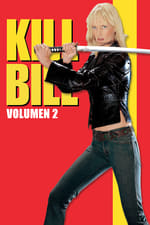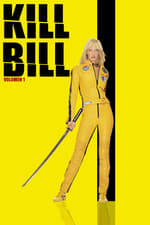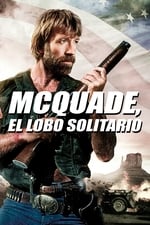Información personal
Conocido por Interpretación
Créditos conocidos 235
Sexo Masculino
Fecha de nacimiento 8 de diciembre de 1936
Fecha de defunción 3 de junio de 2009 (72 años)
Lugar de nacimiento Hollywood, Los Angeles, California, USA
También conocido como
- John Arthur Carradine
- 大衛·卡拉定
Puntuación del contenido
100
¡Sí! ¡Buena pinta!
Iniciar sesión para informar de un problema
Biografía
David Carradine (born John Arthur Carradine Jr.; December 8, 1936 – June 3, 2009) was an American actor best known for playing martial arts roles. He is perhaps best known as the star of the 1970s television series Kung Fu, playing Kwai Chang Caine, a peace-loving Shaolin monk travelling through the American Old West. He also portrayed the title character of both of the Kill Bill films. He appeared in two Martin Scorsese films: Boxcar Bertha and Mean Streets.
David Carradine was a member of the Carradine family of actors that began with his father, John Carradine. The elder Carradine's acting career, which included major and minor roles on stage, television, and in cinema, spanned more than four decades. A prolific "B" movie actor, David Carradine appeared in more than 100 feature films in a career spanning more than six decades. He received nominations for a Golden Globe Award and an Emmy Award for his work on Kung Fu, and received three additional Golden Globe nominations for his performances in the Woody Guthrie biopic Bound for Glory (1976), the television miniseries North and South (1985), and Quentin Tarantino's Kill Bill: Volume 2, for which he won the Saturn Award for Best Supporting Actor.
Throughout his life, Carradine was arrested and prosecuted for a variety of offenses, which often involved substance abuse. Films that featured Carradine continued to be released after his death. These posthumous credits were from a variety of genres including action, documentaries, drama, horror, martial arts, science fiction, and westerns. In addition to his acting career, Carradine was a director and musician. Moreover, influenced by his Kung Fu role, he studied martial arts. On April 1, 1997, Carradine received a star on the Hollywood Walk of Fame.
Description above from the Wikipedia article David Carradine, licensed under CC-BY-SA, full list of contributors on Wikipedia.
David Carradine (born John Arthur Carradine Jr.; December 8, 1936 – June 3, 2009) was an American actor best known for playing martial arts roles. He is perhaps best known as the star of the 1970s television series Kung Fu, playing Kwai Chang Caine, a peace-loving Shaolin monk travelling through the American Old West. He also portrayed the title character of both of the Kill Bill films. He appeared in two Martin Scorsese films: Boxcar Bertha and Mean Streets.
David Carradine was a member of the Carradine family of actors that began with his father, John Carradine. The elder Carradine's acting career, which included major and minor roles on stage, television, and in cinema, spanned more than four decades. A prolific "B" movie actor, David Carradine appeared in more than 100 feature films in a career spanning more than six decades. He received nominations for a Golden Globe Award and an Emmy Award for his work on Kung Fu, and received three additional Golden Globe nominations for his performances in the Woody Guthrie biopic Bound for Glory (1976), the television miniseries North and South (1985), and Quentin Tarantino's Kill Bill: Volume 2, for which he won the Saturn Award for Best Supporting Actor.
Throughout his life, Carradine was arrested and prosecuted for a variety of offenses, which often involved substance abuse. Films that featured Carradine continued to be released after his death. These posthumous credits were from a variety of genres including action, documentaries, drama, horror, martial arts, science fiction, and westerns. In addition to his acting career, Carradine was a director and musician. Moreover, influenced by his Kung Fu role, he studied martial arts. On April 1, 1997, Carradine received a star on the Hollywood Walk of Fame.
Description above from the Wikipedia article David Carradine, licensed under CC-BY-SA, full list of contributors on Wikipedia.
Interpretación
|
||||||||||||||||||||||||||||||||||||||||||
|
||||||||||||||||||||||||||||||||||||||||||
|
||||||||||||||||||||||||||||||||||||||||||
|
||||||||||||||||||||||||||||||||||||||||||
|
||||||||||||||||||||||||||||||||||||||||||
|
||||||||||||||||||||||||||||||||||||||||||
|
||||||||||||||||||||||||||||||||||||||||||
|
||||||||||||||||||||||||||||||||||||||||||
|
||||||||||||||||||||||||||||||||||||||||||
|
||||||||||||||||||||||||||||||||||||||||||
|
||||||||||||||||||||||||||||||||||||||||||
|
||||||||||||||||||||||||||||||||||||||||||
|
||||||||||||||||||||||||||||||||||||||||||
|
||||||||||||||||||||||||||||||||||||||||||
|
||||||||||||||||||||||||||||||||||||||||||
|
||||||||||||||||||||||||||||||||||||||||||
|
||||||||||||||||||||||||||||||||||||||||||
|
||||||||||||||||||||||||||||||||||||||||||
|
||||||||||||||||||||||||||||||||||||||||||
|
||||||||||||||||||||||||||||||||||||||||||
|
||||||||||||||||||||||||||||||||||||||||||
|
||||||||||||||||||||||||||||||||||||||||||
|
||||||||||||||||||||||||||||||||||||||||||
|
||||||||||||||||||||||||||||||||||||||||||
|
||||||||||||||||||||||||||||||||||||||||||
|
||||||||||||||||||||||||||||||||||||||||||
|
||||||||||||||||||||||||||||||||||||||||||
|
||||||||||||||||||||||||||||||||||||||||||
|
||||||||||||||||||||||||||||||||||||||||||
|
||||||||||||||||||||||||||||||||||||||||||
|
||||||||||||||||||||||||||||||||||||||||||
|
||||||||||||||||||||||||||||||||||||||||||
|
||||||||||||||||||||||||||||||||||||||||||
|
||||||||||||||||||||||||||||||||||||||||||
|
||||||||||||||||||||||||||||||||||||||||||
|
||||||||||||||||||||||||||||||||||||||||||
|
||||||||||||||||||||||||||||||||||||||||||
|
||||||||||||||||||||||||||||||||||||||||||
|
||||||||||||||||||||||||||||||||||||||||||
|
||||||||||||||||||||||||||||||||||||||||||
|
||||||||||||||||||||||||||||||||||||||||||
|
||||||||||||||||||||||||||||||||||||||||||
|
||||||||||||||||||||||||||||||||||||||||||
|
||||||||||||||||||||||||||||||||||||||||||
|
||||||||||||||||||||||||||||||||||||||||||
|
||||||||||||||||||||||||||||||||||||||||||
|
||||||||||||||||||||||||||||||||||||||||||
|
||||||||||||||||||||||||||||||||||||||||||
|
||||||||||||||||||||||||||||||||||||||||||
|
||||||||||||||||||||||||||||||||||||||||||
|
||||||||||||||||||||||||||||||||||||||||||
|
||||||||||||||||||||||||||||||||||||||||||
|
||||||||||||||||||||||||||||||||||||||||||
|
Producción
|
|||||||||
|
|||||||||
|
|||||||||
|
|||||||||
|
|||||||||
|
|||||||||
|
Dirección
|
|||
|
|||
|
Edición
|
|||
|
Sonido
|








